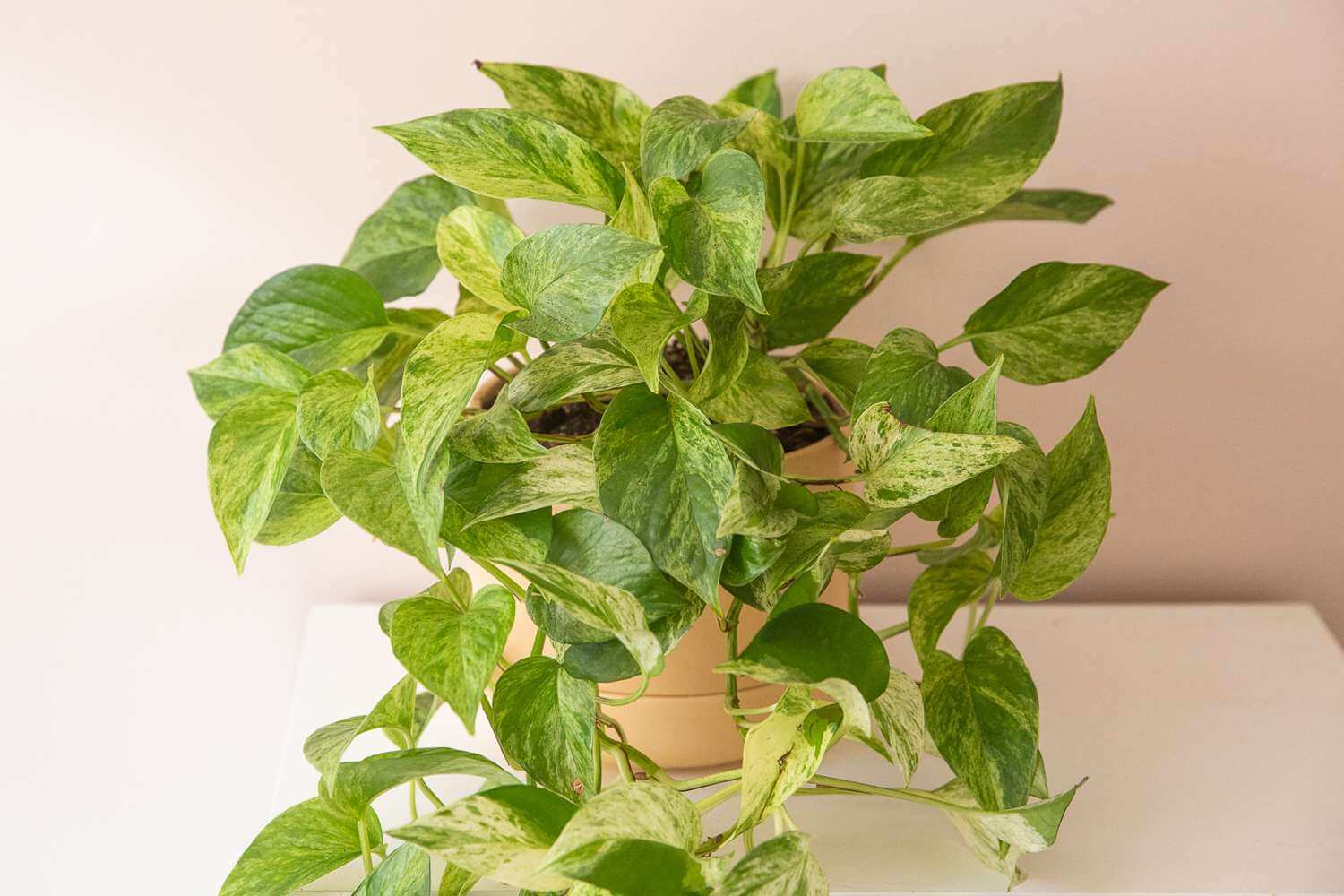
Perhaps one of the most common (and easy to care for) houseplants available, the marble queen pothos (Epipremnum aureum ‘Marble Queen’) is a variety of pothos with beautiful white and cream variegation. Similar to other types of pothos, the marble queen pothos grows well indoors and can adapt to a range of growing conditions, making it versatile and perfect for beginners.
Unfortunately, marble queen pothos are considered mildly toxic to cats, dogs, and humans if ingested.1 Take caution with this pothos if you have pets or young children at home.
Marble Queen Pothos Care
Light
As with most pothos, marble queen pothos do best with medium to bright, indirect light. Due to their white variegation, these pothos can’t tolerate low light, which will cause the variegation to revert and the growth to slow. At the same time, the delicate leaves are sensitive to burning in direct sunlight so avoid extended periods of harsh, direct light.
Soil
A soil mix that is rich and well-draining is best for the marble queen pothos. Mixes designed for aroids or soilless mixes are both great options. However, you can also make your own at home by combining one part potting soil, one part perlite, and one part orchid bark for a light and airy soil mixture that your pothos will love.
Water
Marble queen pothos enjoy consistent watering, but are also relatively drought tolerant—so don’t panic if you forget the occasional watering. Ideally, they should be watered once the top two to three inches of soil has dried out.
Temperature and Humidity
Marble queen pothos make ideal houseplants because they thrive in standard household temperature and humidity levels. They are not cold-tolerant plants, so avoid exposing them to temperatures below 55 degrees Fahrenheit (13 degrees Celsius).
While not required, providing your marble queen pothos with some extra humidity will help encourage strong, vigorous growth. They grow well in humid rooms such as kitchens or bathrooms, or you can place them near a humidifier or on a pebble tray to provide them with a bit of extra humidity.
Fertilizer
Fertilize your marble queen pothos once a month during the spring and summer with a balanced liquid fertilizer to encourage strong, healthy growth. Stop fertilizing once the temperatures begin to drop in the fall.
Propagating Marble Queen Pothos
Marble queen pothos can be easily propagated by stem cuttings, which is a great way to encourage fuller growth on your existing plant, or create new plants to share with friends.
Potting and Repotting Marble Queen Pothos
These pothos should be repotted every one to two years, or once they outgrow their potting container. However, marble queen pothos can tolerate being slightly rootbound so don’t panic if you don’t get around to it right away. Ideally, spring or early summer is the best time to repot a pothos plant.
Common Pests & Plant Diseases
Keep an eye out for a few common pests including mealybugs, scale, fungus gnats, and spider mites. Regularly inspecting your plant for signs of pests is the best way to prevent full-blown infestations. In addition, like all pothos, the marble queen is also susceptible to root rot which commonly results from overwatering or improper drainage.
Common Problems With Marble Queen Pothos
Generally, marble queen pothos are low-maintenance, problem-free houseplants. However, issues can arise if you are not watering your plant correctly, or if it is not receiving enough light. Two common problems that you may notice with your marble queen pothos are browning leaves and yellowing leaves.
Marble queen pothos is one of the most common varieties of pothos available, besides the golden pothos and jade pothos. It is not considered rare, and can be readily found at most nurseries, garden centers, and plant shops.
Marble queen pothos don’t mind being slightly rootbound, but you should upgrade your plant’s pot before the roots completely overtake the soil. A plant that is too rootbound will begin to lose leaves, slow its growth, and struggle to absorb water and nutrients.
Pothos are commonly grown in hanging planters, but they are natural climbers that can also be trained to grow up a trellis or moss pole. Pothos plants that are allowed to climb will grow larger leaves and may even develop fenestrations as they mature.